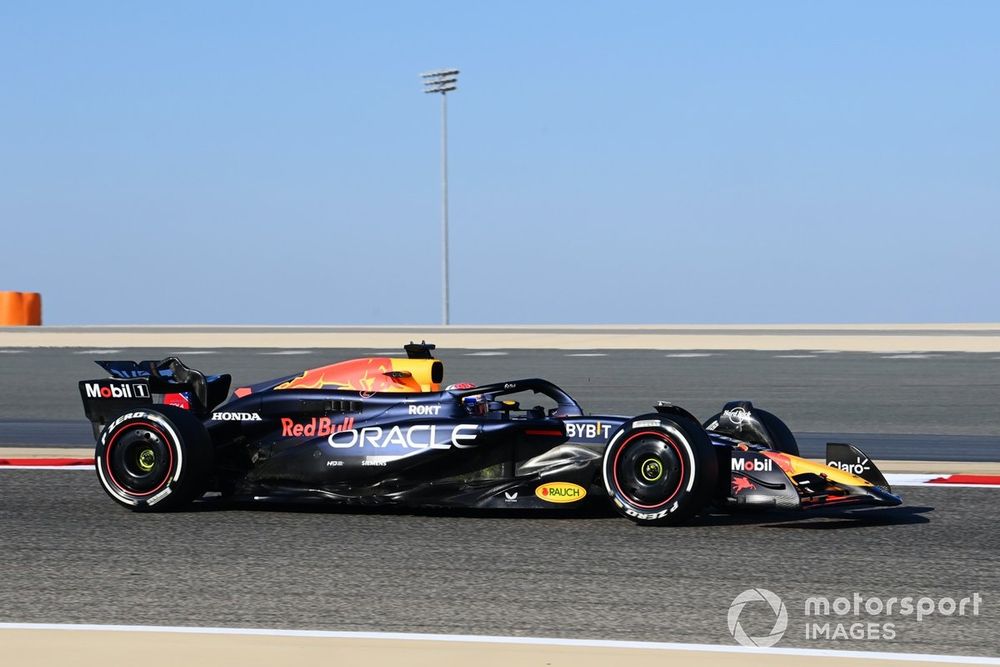The pace of the RB20 in the world champion’s hands throughout practice and qualifying has further highlighted the advantage he has over the opposition right now.
But despite a pretty close fight for the top grid spots – where Charles Leclerc’s best Q2 lap would actually have been good enough for pole position – few are anticipating much hope of holding a candle to him around Sakhir on Saturday.
As Ferrari’s Carlos Sainz said about the deficit to Red Bull in qualifying appearing closer than last year: “Let’s wait until the race.
“I think that’s where they suddenly level it up and that’s where they manage to have degradation that no one can have, and a race pace that no one can have.
“I think last year, if you look at the last eight races: in quali we were always there, within reach of them, and this year we felt again within reach in quali [pace]. In the race? We’ll see.”
But if the performance deficit to Verstappen has left rivals feeling their chances are minimal, there is further bad news for them – because Red Bull also enjoys a tyre strategy advantage heading into the grand prix.
Almost slipping under the radar, Red Bull elected to steer clear of an early soft tyre run in final free practice and opted to use a hard tyre instead.
Max Verstappen, Red Bull Racing RB20
Photo by: Mark Sutton / Motorsport Images
That means for the race, Red Bull duo Verstappen and Sergio Perez have a new soft available, while all its main opposition only have used ones.
Here is a run-down of the tyre sets available:
For a high degradation track like Bahrain, it would seem counter intuitive to feel that extra softs are a benefit, but things fall that way here because the medium is not an especially good tyre for the race.
As Pirelli’s Mario Isola explained: “The medium is very close in terms of delta lap time with the hard, but with higher degradation. That means that there is no real advantage with it.”
The medium’s characteristics therefore push the frontrunners to the soft – especially for the start and opening stint.
Isola added: “I believe the majority, or at least the cars in front, will start with the soft because otherwise they lose too many tracks positions.
“The lap time delta between the soft and hard is big. The soft/medium is 1.2s, and the medium/hard is 0.3-0.4s, so it means that you have 1.5 seconds between the hard and soft. That is a lot.
“So if you start with the hard, and you are…
Click Here to Read the Full Original Article at Autosport.com – Formula 1 – Stories…

